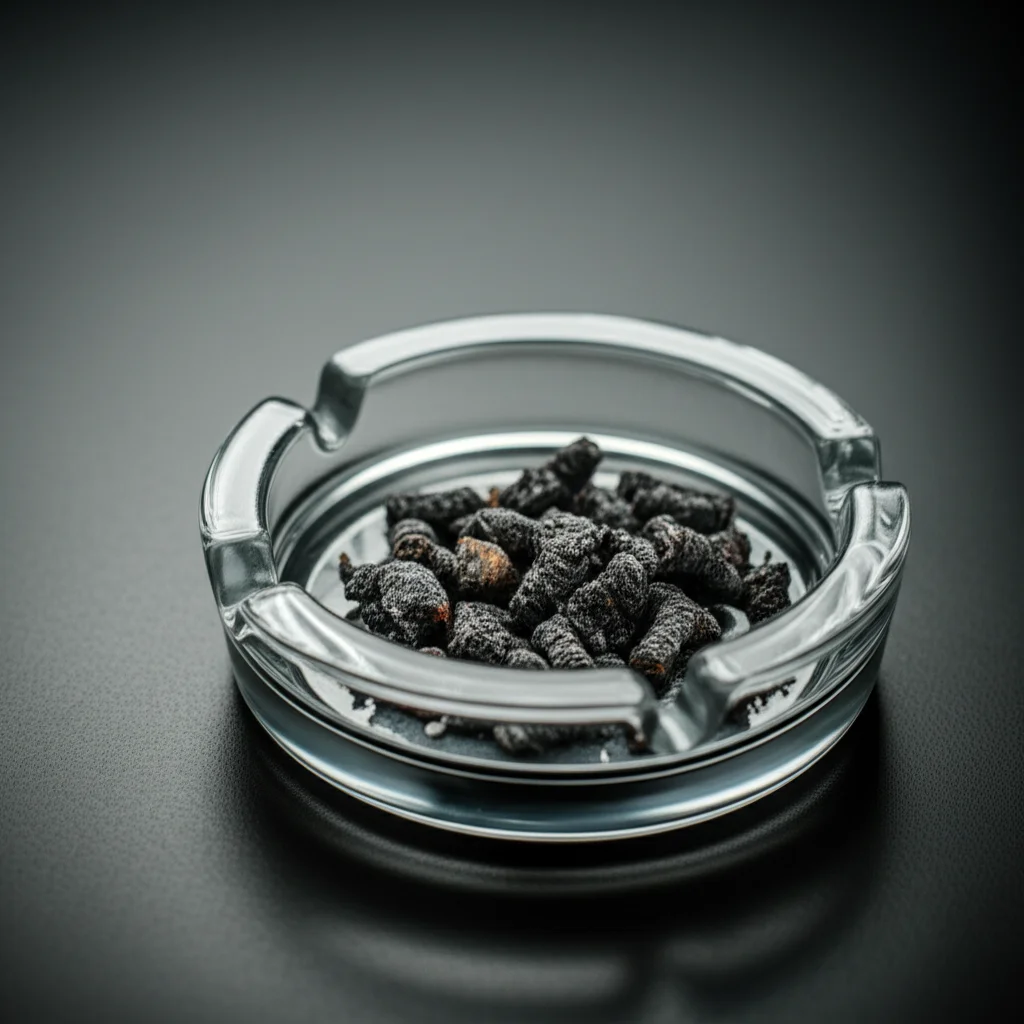· Todd Martin · Home Cleaning · 20 min read
How To Clean Ashtray

How To Clean Ashtray Effectively
Do you find your ashtrays looking dull, smelling stale, or covered in stubborn residue? Cleaning ashtrays properly is more than just emptying them. It involves tackling persistent odors and sticky tar buildup. A dirty ashtray affects the cleanliness of your space. It also can ruin the aesthetic of your decor. I understand the challenge of keeping them fresh. This guide will show you simple ways to make your ashtrays spotless. We will cover different materials and persistent cleaning issues. Get ready to transform your ashtrays from grimy to gleaming.
Takeaway:
- Regular emptying and basic cleaning prevent heavy buildup.
- Different materials require specific cleaning methods and solutions.
- Baking soda, vinegar, and rubbing alcohol are effective natural cleaners.
- Deep cleaning removes stubborn tar and eliminates lingering odors.
- Preventative measures reduce the frequency of intense cleaning.
To effectively clean an ashtray, first empty all ash and cigarette butts. Rinse it with hot water. Then, scrub it with a solution of dish soap and warm water. For stubborn stains and odors, use a baking soda paste or a vinegar soak. Dry thoroughly to prevent water spots and rust.
Why Clean Your Ashtray? The Benefits of Regular Maintenance
Maintaining a clean ashtray goes beyond simple tidiness. It contributes to a fresher living environment. Dirty ashtrays often emit unpleasant, stale odors. These odors can permeate curtains, furniture, and even clothing. Regularly cleaning your ashtray stops these smells from spreading. It keeps your home smelling much better.
A buildup of ash and tar also creates a breeding ground for germs. While not always visible, bacteria and other microorganisms can thrive in such conditions. Keeping your ashtray clean promotes better hygiene. It reduces the presence of unwanted elements in your personal space. This simple act supports a healthier home environment for everyone.
Visually, a clean ashtray is more appealing. It reflects a well-kept home. A dirty, ash-filled ashtray can be an eyesore. It signals neglect. Regular cleaning maintains the item’s original appearance. It ensures it blends seamlessly with your home decor. A gleaming ashtray looks good and feels good to use.
Furthermore, neglected ashtrays can suffer damage over time. Tar and nicotine are corrosive. They can etch surfaces or cause discoloration. Especially with materials like plastic or certain metals. Timely cleaning prevents this permanent damage. It helps extend the life of your ashtray. Your ashtray will last longer with proper care.
Finally, proper disposal of ash and butts is important. Emptying the ashtray into a sealed container reduces fire risks. It prevents loose ash from scattering. A routine cleaning schedule ensures safe disposal. It keeps your space safer and cleaner.
Gathering Your Cleaning Arsenal: Essential Supplies
Before you begin the cleaning process, gather all necessary tools. Having everything ready saves time and makes the job easier. You do not need many special items. Most of these supplies are likely already in your home. This approach prepares you for efficient cleaning.
First, you will need protective gear. Disposable gloves are a must. They protect your hands from ash, tar, and cleaning solutions. They also prevent the smell of ash from sticking to your skin. Eye protection, like safety glasses, is also wise. It guards against splashes, especially when dealing with strong cleaners.
For removing loose debris, a small brush or old toothbrush works well. These tools can sweep out ash and dislodge larger particles. You will also need paper towels or old rags for wiping and drying. Microfiber cloths are excellent for polishing. They leave surfaces streak-free.
When it comes to cleaning solutions, dish soap is your primary agent. A good quality dish soap cuts through grease and grime. It works effectively on most ashtray materials. White vinegar is another powerful, natural cleaner. It neutralizes odors and helps dissolve tough stains. For extra stubborn tar, rubbing alcohol (isopropyl alcohol) or nail polish remover (acetone-based) can be very effective.
Baking soda is an excellent abrasive and odor absorber. You can make a paste with it for scrubbing. A small container or bowl for soaking the ashtray is also helpful. Ensure the container is large enough to submerge the ashtray fully. Finally, a designated trash bag or container for ash disposal keeps things tidy. This prepares you for a clean and efficient process.
- Protective Gear: Disposable gloves, safety glasses.
- Cleaning Tools: Small brush or old toothbrush, paper towels, old rags, microfiber cloths.
- Cleaning Solutions: Dish soap, white vinegar, rubbing alcohol, baking soda, nail polish remover (acetone-based).
- Containers: Soaking bowl, trash bag.
Basic Cleaning for Ashtrays: A Quick Daily Routine
Daily ashtray maintenance prevents major buildup. It keeps your space fresh with minimal effort. This routine is simple and quick. It takes only a few minutes each day. Making it a habit will save you from bigger cleaning tasks later.
First, empty the ashtray completely. Carefully tap out all loose ash and cigarette butts into a trash can. You can line the trash can with a bag first. This prevents ash from spreading. Ensure no hot embers remain, as they can start fires. If possible, do this outdoors to avoid indoor mess.
Next, give the ashtray a quick rinse under warm running water. This helps remove residual ash and some light dust. Do not use very hot water if your ashtray is made of glass and very cold. Extreme temperature changes can cause glass to crack. A gentle rinse is often enough for daily upkeep.
After rinsing, wipe the ashtray dry with a paper towel or an old cloth. This step is important to prevent water spots. It also stops any remaining damp ash from sticking. A dry ashtray is less likely to accumulate new grime quickly. It looks clean and ready for use.
For a slightly more thorough daily clean, add a drop of dish soap to a damp sponge. Quickly wipe down the inside and outside of the ashtray. Then, rinse again thoroughly. This helps tackle any minor tar residue forming. It keeps the surface smoother.
This basic routine is perfect for maintaining cleanliness. It prevents odors from setting in. It also keeps your ashtray looking presentable day after day. Consistency is key for long-term freshness. I find this quick wipe-down makes a huge difference.
Deep Cleaning Different Ashtray Materials
Deep cleaning is essential for removing stubborn stains and lingering odors. Different ashtray materials require specific approaches. Using the right method ensures effective cleaning without damaging your item. I will guide you through cleaning common ashtray materials.
Glass and Ceramic Ashtrays
Glass and ceramic ashtrays are common due to their durability and ease of cleaning. They withstand high temperatures and are non-porous. This makes them less likely to absorb odors. However, tar and nicotine can still leave sticky, dark residues.
To deep clean these materials, start by scraping any large, dried-on tar chunks with a plastic scraper. Avoid metal tools, as they can scratch the surface. Then, place the ashtray in a sink or basin. Fill it with hot water and a generous amount of dish soap. Let it soak for 30 minutes to an hour. This helps loosen the stubborn grime.
After soaking, use a stiff brush or a non-abrasive scrubbing pad. Vigorously scrub the inside and outside of the ashtray. Pay special attention to grooves and corners where tar collects. For very sticky residue, a mixture of baking soda and a little water can form a paste. Apply this paste and scrub. The gentle abrasive action of baking soda helps lift the grime.
For an extra shine and to remove any lingering cloudiness, I recommend a final rinse with a solution of warm water and white vinegar. A 50/50 mix often works wonders. This also helps neutralize any remaining odors. Rinse thoroughly with clean water afterwards. Then, dry the ashtray completely with a clean cloth. This prevents water spots and ensures a sparkling finish. For general glass cleaning tips, you can explore how to clean glass with vinegar. If you notice burnt-on residue, techniques for cleaning burnt glass can be useful.
Metal Ashtrays
Metal ashtrays, often made of stainless steel, brass, or aluminum, are sturdy but can corrode or tarnish if not cleaned correctly. Stainless steel is generally the easiest to maintain. Others like brass might require more specific care to retain their luster.
For stainless steel ashtrays, begin by emptying and rinsing as usual. Then, create a paste using baking soda and a small amount of water. Apply this paste to the ashtray, especially on stained areas. Let it sit for 10-15 minutes. Baking soda is a mild abrasive that helps lift stains without scratching the metal.
Scrub the ashtray with a soft brush or sponge. Work in the direction of the metal’s grain if visible. This prevents streaking. Rinse thoroughly with warm water. For extra shine, you can wipe it down with a cloth lightly dampened with white vinegar. Vinegar helps remove water spots and brightens the metal. Always rinse well after using vinegar.
For brass or other polished metals, avoid harsh abrasives or acidic cleaners. These can strip the finish. Instead, use a gentle metal cleaner or polish designed for that specific metal. Apply according to product instructions. Buff with a soft, dry cloth. Always test on an inconspicuous area first. Ensure the ashtray is completely dry before storing or using. This prevents rust or tarnish. For more general advice on cleaning this material, learn how to clean stainless steel.
Plastic and Silicone Ashtrays
Plastic and silicone ashtrays are durable and often come in fun designs. They are generally resistant to breakage. However, they can absorb odors more easily than glass or ceramic. They are also more prone to staining from tar and nicotine.
To clean plastic or silicone ashtrays, start by emptying and rinsing them. Prepare a solution of warm water and dish soap. Soak the ashtray in this solution for at least 30 minutes. For persistent stains, you might need to extend the soaking time. Hot water helps to soften the tar.
After soaking, scrub the ashtray with a soft brush or sponge. Avoid abrasive scrubbers on plastic. They can create tiny scratches. These scratches can trap dirt and odors more easily in the future. For deep-seated tar stains, rubbing alcohol can be effective. Apply a small amount to a cloth and gently wipe the stained areas. Acetone-based nail polish remover can also work, but use it sparingly and test on an inconspicuous area first. It might be too harsh for some plastics.
To tackle odors, a baking soda soak is highly effective. After washing, fill the ashtray with a baking soda and water paste. Let it sit overnight. Then rinse thoroughly. You can also spray a vinegar solution inside and let it air dry. Ensure the ashtray is completely dry before reuse. This helps prevent future staining and odor absorption. For further guidance on removing marks from these materials, you can explore how to clean stains on plastic.
Stone and Wood Ashtrays
Stone and wood ashtrays offer a natural aesthetic. However, they are more delicate and require specialized care. Stone, like marble or granite, is porous and can stain. Wood is also porous and can absorb odors and liquids, leading to damage.
For stone ashtrays, avoid acidic cleaners like vinegar. These can etch or damage the stone surface. Instead, use a mild, pH-neutral dish soap solution. Mix a small amount of dish soap with warm water. Dampen a soft cloth with this solution. Gently wipe down the ashtray.
For stubborn stains on stone, a poultice can be effective. Mix baking soda with a little water to form a thick paste. Apply the paste over the stain. Cover it with plastic wrap. Let it sit for several hours or overnight. The poultice draws out the stain. Then, gently scrape off the dried paste and rinse with clean water. Dry thoroughly immediately. For broader knowledge, you can research how to clean stone surfaces or specifically how to clean marble.
Wood ashtrays should never be soaked in water. Water can warp, crack, or swell the wood. Instead, wipe them down with a slightly damp cloth. Use a very mild wood cleaner or a tiny bit of dish soap on the cloth. Follow immediately with a dry cloth to absorb all moisture. For sticky residue, a tiny amount of mineral oil on a cloth can help loosen it. Then wipe clean.
To neutralize odors in wood ashtrays, sprinkle baking soda generously inside. Let it sit for several hours or overnight. Then, vacuum or brush out the baking soda. You can also place activated charcoal in the ashtray when not in use. This helps absorb smells. Always ensure wood ashtrays are completely dry to prevent mold or damage. Regular light maintenance is key for these materials.
Tackling Stubborn Stains and Lingering Odors
Even after basic cleaning, some ashtrays hold onto tough stains or odors. These issues stem from concentrated tar, nicotine, and long-term absorption. Addressing them requires specific techniques and stronger agents. I often face these challenges. Here are my best methods.
Removing Stubborn Tar and Nicotine Stains
Tar and nicotine leave behind a sticky, dark brown residue. This residue can be difficult to remove with just soap and water. The key is to dissolve the sticky compounds.
For glass and ceramic ashtrays, rubbing alcohol (isopropyl alcohol) is highly effective. Pour a small amount directly onto the stained areas. Let it sit for a few minutes to break down the tar. Then, scrub vigorously with a stiff brush or a non-abrasive pad. You will see the tar dissolve and lift away. Repeat if necessary for heavy buildup. Acetone-based nail polish remover also works similarly. Always rinse thoroughly with water after using these solvents.
On metal ashtrays, the baking soda paste mentioned earlier is a good starting point. For very stubborn spots, try applying a small amount of automotive tar remover. Test this in an inconspicuous spot first to ensure it does not damage the metal finish. Apply, let it sit briefly, then wipe and rinse.
For plastic and silicone, rubbing alcohol is usually safe and effective. Apply it to a cloth and wipe the stains. Avoid harsh solvents like paint thinner, as they can melt or permanently damage plastic. For difficult stains on plastic, a stronger solution might be needed. Sometimes, a mixture of dish soap, warm water, and a tablespoon of ammonia (in a well-ventilated area) can break down tar on sturdy plastics. Always wear gloves and ventilate the space well when using ammonia. Always check a hidden spot first.
Eliminating Lingering Odors
The stale smell of cigarettes is one of the most persistent issues with ashtrays. This odor seeps into porous materials and clings to non-porous ones. Simple washing often does not completely remove it.
Baking soda is a miracle worker for odor absorption. After cleaning the ashtray, generously sprinkle dry baking soda over the entire surface. For severe odors, fill the ashtray with baking soda. Let it sit overnight, or even for 24-48 hours. The baking soda will absorb the odors. Afterwards, simply dump out the baking soda and rinse the ashtray.
White vinegar is another powerful odor neutralizer. After washing, fill the ashtray with undiluted white vinegar. Let it soak for a few hours. The vinegar’s acidity breaks down the odor-causing compounds. After soaking, pour out the vinegar and rinse the ashtray thoroughly with clean water. The vinegar smell will dissipate as it dries. For a quicker fix, you can spray a vinegar solution inside. Then let it air dry completely.
For non-washable materials like wood, activated charcoal or coffee grounds can absorb odors. Place a small bowl of activated charcoal or fresh coffee grounds inside the ashtray when not in use. Cover the ashtray to contain the odor-absorbing agents. Replace them regularly.
Another trick is to use citrus peels. Orange, lemon, or grapefruit peels can leave a fresh scent. Place a few peels in the clean ashtray. The natural oils help to mask and absorb odors. This is a temporary solution but effective for a quick refresh. Ultimately, regular deep cleaning is the best defense against lingering odors.
Preventative Measures: Keeping Ashtrays Cleaner Longer
Prevention is always easier than a cure. Implementing a few simple habits can drastically reduce the need for intensive ashtray cleaning. These small steps save you time and effort in the long run. I rely on these to keep my ashtrays in top condition.
First, always empty the ashtray frequently. Daily emptying is ideal. This stops ash and butts from accumulating. Less buildup means less tar and odor become embedded. It also prevents ash from scattering and making a mess around the ashtray. A quick empty is better than waiting for it to overflow.
Second, rinse the ashtray after each emptying. A quick swish under warm water removes loose ash and prevents it from sticking. This simple rinse can prevent light residue from hardening. It makes subsequent cleaning much easier. Remember to dry it completely to avoid water spots.
Consider placing a small amount of sand or gravel in outdoor ashtrays. This provides a softer landing spot for butts. It helps to extinguish them more fully. This can also absorb some of the tar and reduce direct contact with the ashtray surface. Just be sure to change the sand or gravel regularly, as it will absorb odors over time. For insights into cleaning such materials, check out how to clean gravel.
Use ashtrays made of non-porous materials. Glass, ceramic, and stainless steel are less likely to absorb odors and stains compared to plastic or wood. If you have the choice, opt for these materials. They are generally easier to clean deeply. Their smooth surfaces resist clinging tar.
Avoid grinding out cigarettes vigorously in the ashtray. This action pushes tar and nicotine deeper into the material’s pores. It also creates more burnt residue that is hard to remove. Instead, gently tap off ash and fully extinguish the butt. This minimizes the amount of sticky residue left behind.
Lastly, do a quick wipe-down with a damp cloth and a drop of dish soap once a week. This goes beyond just rinsing. It actively removes light tar buildup before it becomes a problem. Consistent light cleaning prevents heavy grime from forming. This proactive approach keeps your ashtray fresh and clean with minimal effort.
Safety First: Important Cleaning Precautions
Cleaning ashtrays involves handling ash, potentially harsh chemicals, and sometimes hot water. Prioritizing safety protects you from harm and ensures effective cleaning. I always follow these precautions to keep myself safe.
First and foremost, ensure proper ventilation. When working with cleaning solutions like vinegar, rubbing alcohol, or ammonia, fumes can be irritating. Open windows and doors to allow fresh air to circulate. If you are cleaning indoors, consider using a fan to direct fumes away from your face. Good ventilation is crucial to prevent respiratory irritation.
Always wear protective gloves. Ash and tar can be messy and contain residues that can irritate skin. Cleaning solutions, especially stronger ones like rubbing alcohol or certain commercial cleaners, can also dry out or irritate your hands. Disposable gloves provide a barrier and keep your hands clean.
Protect your eyes. Splashing cleaning solutions or even dislodged ash can get into your eyes. Wearing safety glasses or goggles is a simple but effective way to prevent eye irritation or injury. This is especially important if you are scrubbing vigorously.
Handle hot water with care. If you are soaking an ashtray in hot water, use tongs or wait for the water to cool before putting your hands in. Very hot water can cause burns. Also, be mindful of sudden temperature changes when cleaning glass. Extreme hot to cold or cold to hot can cause glass to crack.
Never mix cleaning chemicals without knowing their reactions. For example, mixing bleach with ammonia produces dangerous toxic fumes. Stick to one type of cleaner or follow product instructions carefully. When in doubt, rinse the ashtray thoroughly before switching cleaning agents.
Ensure the ashtray is completely cool before starting any cleaning. Hot ash or smoldering butts can cause burns or melt plastic cleaning tools. Always let the ashtray cool down entirely before you handle it or begin cleaning. This also prevents fire hazards when disposing of contents.
Finally, dispose of cleaning waste properly. Ash and cleaning solutions should be contained and disposed of according to local guidelines. Do not pour strong chemical solutions down drains without diluting them sufficiently. This prevents harm to plumbing and the environment. These safety measures ensure a safe and effective cleaning experience.
FAQ Section
Q1: How often should I clean my ashtray?
For optimal freshness and hygiene, I recommend a quick clean daily. Emptying and rinsing the ashtray daily prevents buildup and keeps odors at bay. A deep clean, tackling stubborn stains and absorbed odors, should be performed weekly or bi-weekly. This depends on how frequently the ashtray is used and the type of material. Consistent light cleaning saves you from more intense efforts.
Q2: Can I put my ashtray in the dishwasher?
It depends on the ashtray material. Glass and ceramic ashtrays are generally dishwasher safe. However, check the manufacturer’s instructions if available. Metal ashtrays might be safe, but some metals can tarnish or rust. Plastic and silicone ashtrays may warp or melt in high heat. Handwashing is often safer for these. Always confirm material compatibility before using a dishwasher.
Q3: What is the best way to remove tar stains from an ashtray?
For tar stains, rubbing alcohol or acetone-based nail polish remover are very effective solvents. Apply a small amount to the stained area. Let it sit briefly to dissolve the tar. Then, scrub with a brush or cloth. For glass and ceramic, this works well. For plastic, test in an inconspicuous spot first to ensure it does not damage the material. Always rinse thoroughly afterward.
Q4: How do I get rid of the stale cigarette smell?
Baking soda and white vinegar are excellent for odor removal. After cleaning, generously sprinkle baking soda into the ashtray and let it sit overnight. It absorbs odors. Alternatively, soak the ashtray in undiluted white vinegar for a few hours. The vinegar neutralizes smells. Rinse thoroughly after either method. For wood, activated charcoal or coffee grounds can help absorb lingering odors.
Q5: Can I use bleach to clean my ashtray?
I do not recommend using bleach on ashtrays. Bleach can be harsh and may damage certain materials, especially metals or colored plastics. It also produces strong fumes. While it disinfects, other cleaning agents like dish soap, vinegar, or rubbing alcohol are usually sufficient and safer for removing ashtray grime and odors. Always prioritize milder, safer alternatives first.
Conclusion
Keeping your ashtray clean is a straightforward process that offers significant benefits. We covered everything from simple daily rinses to deep cleaning different materials. You now understand the importance of tackling ash, tar, and odors. Remember, consistent effort makes a big difference. Emptying your ashtray daily and giving it a quick rinse goes a long way.
For stubborn issues, specific methods for glass, metal, plastic, stone, and wood will restore your ashtray’s shine. Using common household items like baking soda, vinegar, and rubbing alcohol can achieve professional results. Always prioritize safety by using gloves, ensuring ventilation, and never mixing incompatible chemicals. By following these steps on how to clean ashtray, you ensure your space stays fresh and inviting. Make ashtray cleaning a regular part of your home maintenance routine. Your home will feel cleaner and smell better.
- ashtray cleaning
- cigarette ash removal
- odor removal
- household cleaning tips
- smoking accessories maintenance





